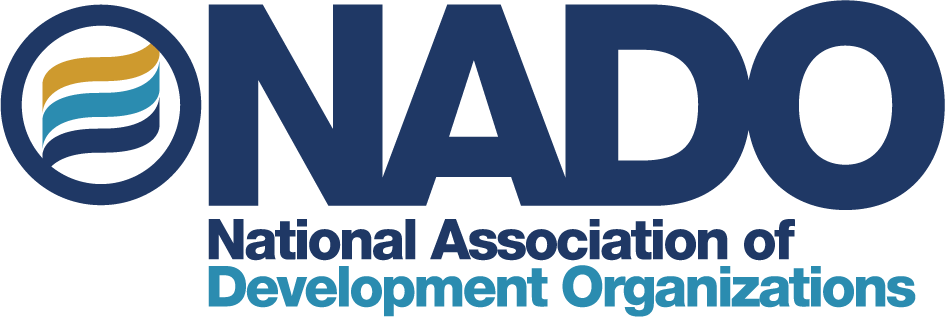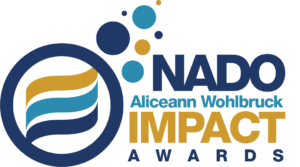 Regional Development Organizations (RDOs) across the country are planning for the expansion of broadband internet service to meet the growing needs of employers, businesses, educational facilities, healthcare, community services, transportation, and tourism.
Regional Development Organizations (RDOs) across the country are planning for the expansion of broadband internet service to meet the growing needs of employers, businesses, educational facilities, healthcare, community services, transportation, and tourism.
The COVID-19 pandemic has highlighted where gaps in high-speed, reliable internet exist. Regional agencies are partnering with state and local governments to take steps to enhance broadband policy, funding, planning, and implementation. This resource page includes RDO feasibility plan examples, conference presentations, and links to broadband research and publications prepared by the NADO Research Foundation and industry partners.
Have a broadband feasibility study or plan that you would like to share? Email [email protected] with any additional resources on broadband work in your region or state. New resources will be added over time.
(Last updated January 7, 2021)
USDA ReConnect Program Funding Opportunity
ReConnect Program now accepting applications!
USDA is making $1.15 billion in funding available through the ReConnect Program starting November 24, 2021. Eligible applicants are state, local or territory governments; corporations; Native American Tribes; limited liability companies and cooperative organizations.
This funding, which does not include the nearly $2 billion from the Bipartisan Infrastructure Law, is available for projects serving rural areas where at least 90 percent of the households lack broadband service at speeds of 100 megabits per second (Mbps) (download) and 20 Mbps (upload). USDA will give priority to projects that will serve people in low-density rural areas and areas lacking internet access services at speeds of at least 25 Mbps (download) and 3 Mbps (upload).
Visit the ReConnect page to learn more and apply.
In the News
[New] Broadband Now: Emergency Broadband Benefit Recap: 7.1 Million Households Enrolled, Adoption Varies Significantly by State (December 16, 2021)
[New] The Daily Yonder: Is Your State Ready to Handle the Influx of Federal Funds for Expanding Broadband? (December 29, 2021)
RDO Broadband Feasibility Plan Examples
Colorado
Region 10
Region 10 (in Western Colorado) has been developing a middle-mile broadband network for several years. NEO Connect has also worked with a number of communities to complete broadband strategies and engineering plans.
Louisiana
Acadiana Planning Commission
APC worked in collaboration with Louisiana and USDA partners to prepare the report Acadiana Broadband Assessment 2021. The report includes an assessment of existing broadband capacity and access in six parishes, as well as recommendations for the future.
Michigan
Eastern Upper Peninsula Regional Planning & Development Commission
EUPRPDC recently worked with the Intermediate School District (ISD) on broadband infrastructure planning. The planning effort itself was funded through an EDA Technical Assistance/Planning grant. Draft plan PDF
Minnesota
Upper Minnesota Valley Regional Development Commission
UMVRDC has worked extensively in the region on the broadband topic and has helped with planning, convening, and grant writing. Two applications have been submitted for HUD CDBG-CV (CARES Act) applications to build out fiber to the premise in two small cities.
Links to related documents:
Broadband Case Studies includes projects in the region
Blandin on Broadband – Blandin Foundation website has a search feature to find feasibility studies
Minnesota Rural Broadband Coalition
Minnesota Office of Broadband Development
Oregon
Oregon Broadband Office
Texas
Texas Association of Regional Councils hosted a broadband panel the week of June 1, 2021 for regional councils in Texas most active in the broadband space. Handouts from the event:
- Brazos Valley VCOG Handout
- Deep East Texas COG Handout
- Deep East Texas COG Briefing
- East Texas COG Handout
- Houston-Galveston Area Council Handout
- Houston-Galveston Area Council Broadband Website
Vermont
Windham Regional Commission
The Windham Region Broadband Project was one of the first projects funded by Vermont’s Broadband Innovation Grant (BIG) program. The primary objective of the Windham Region Broadband Project was to serve the unserved and underserved areas of the region. The Project’s Feasibility Study and Business Plan are now being used by the Deerfield Valley Communications Union District (DVCUD) to implement broadband infrastructure throughout the Windham Region.
Washington State
Cowlitz-Wahkiakum Council of Governments
Cowlitz County Scope of Work (PDF)
Wahkiakum Broadband Feasibility Assessment (PDF)
West Virginia
Eastern Panhandle Regional Planning and Development Council
Jefferson County, WV, completed their broadband strategic plan completed in December 2020.
Region One PDC
Regional Optical Communications, Inc. (15-county consortium)
RDO Initiatives
Have an initiative to share? Let us know!
Southern Tier 8 Regional Board
Binghamton, NY
Better Connection: A public engagement website built to crowdsource internet availability, speed, affordability and use for residents in the region in rural Upstate New York.
State Initiatives
Arizona I-17 Fiber Optics
Arizona Department of Transportation plans to bring broadband internet access to more Arizonans by laying fiber optic conduit along a 46-mile stretch of I-17 from Flagstaff to Sedona. ADOT begins the project in October 2021 and plans to use the fiber to provide “smart highway” technology, such as overhead message boards, traffic cameras, weather stations and wrong-way driving detection technology. The I-17 project adds to ADOT’s fiber optic mileage with conduit already in place in the Phoenix and Tucson areas, as well as a stretch of Interstate 10 near Eloy for the dust detection and warning system.
NADO Conference Presentations
2020 Annual Training Conference
October 20: Bringing Broadband to Rural Communities and Regions
2019 Annual Training Conference (Click on Agenda tab and scroll to
October 21): Broadband – Connecting Communities
2019 SWREDA Annual Conference (Click on Agenda tab and scroll.)
Broadband and Economic Development Session
2019 Economic Development Conference for the EDA Denver Region
August 27 Broadband Session
NADO Research Foundation
Case Studies and Reports
Economic Development
Mid-Columbia Economic Development District Maupin Fiber Project
Creating Opportunity and Prosperity through Strengthening Rural-Urban Connections
Transportation
Rural and Small Metropolitan Intelligent Transportation Systems Case Studies (Georgia, Ohio, and Wyoming case studies include broadband technology)
Scheduling and Dispatching Deployment and Broadband Expansion in Rural Ohio
Federal Resources
FCC Mobile Carrier Coverage Map
The Federal Communications Commission (FCC) released a Mobile LTE Coverage Map last week detailing where the largest mobile carriers provide voice and data service in the U.S. The map is part of a broader effort to improve broadband and internet service and to offer consumers a way to search coverage by a specific address or geographic area. The March 2020 Broadband DATA Act requires the FCC to collect data from wired, fixed wireless and satellite broadband providers, and to use that data to create new maps showing broadband availability.
Broadband USA – National Telecommunications and Information Administration
Broadband USA is a website of the National Telecommunications and Information Administration (NTIA), an administration of the U.S. Department of Commerce that promotes innovation and economic growth and supports efforts to expand broadband connectivity. BroadbandUSA serves state, local, and tribal governments, industry, and nonprofits through grant programs, resources, and webinars.
The National Telecommunications and Information Administration keeps a database with information on more than 80 federal programs across 14 federal agencies whose funding can be used for broadband-related purposes.
USDA Broadband
The U.S. Department of Agriculture website includes funding opportunities, recent research, and toolkits.
*New Funding Opportunity*
ReConnect Program application window opens November 24, 2021.
The United States Department of Agriculture has issued a Funding Opportunity Announcement (FOA) to announce that it is accepting applications for fiscal year 2022 (FY 22) for the Rural eConnectivity Program (the ReConnect Program). The Broadband ReConnect Program furnishes loans and grants to provide funds for the costs of construction, improvement, or acquisition of facilities and equipment needed to provide broadband service in eligible rural areas.
USDA plans to make available up to $200 million in ReConnect Program loans, up to $250 million in loan/grant combinations, up to $350 million in grants with a 25 percent matching requirement, and up to $350 million in grants with no matching requirement for projects in tribal and socially vulnerable communities.
USDA, FCC, NTIA Interagency Agreement to Deploy Broadband
USDA, the Federal Communications Commission (FCC), and NTIA announced an interagency agreement on June 24, 2021 to share information about and coordinate the distribution of broadband deployment federal funds. In accordance with the Broadband Interagency Coordination Act, the respective Cabinet and agency leaders will consult with one another and share information about the distribution of new funds from the FCC’s high-cost programs that support broadband buildout in rural areas, the USDA’s Rural Utilities Services grant and loan programs, and programs administered or coordinated by NTIA.
Additional Resources
Benton Institute for Broadband & Society
Features news, headlines, publications, and a weekly digest on broadband press and projects.
Recent rural broadband reports:
Putting State Broadband Funds to Work: Best Practices in State Rural Broadband Grant Programs
Six Community Broadband Networks Demonstrate Diversity of Approaches to Connectivity Challenges
National Conference of State Legislatures
Broadband 2021 Legislation (search by state)
Pew Charitable Trusts
How States Are Expanding Broadband Access
This report explores promising practices in nine states: California, Colorado, Maine, Minnesota, North Carolina, Tennessee, Virginia, West Virginia, and Wisconsin. Pew identified the practices through conversations with more than 300 broadband stakeholders, including representatives of state broadband programs, internet service providers (ISPs), local governments, and broadband coalitions.
![]()
To view PDFs, use a PDF viewer such as Adobe Reader.


